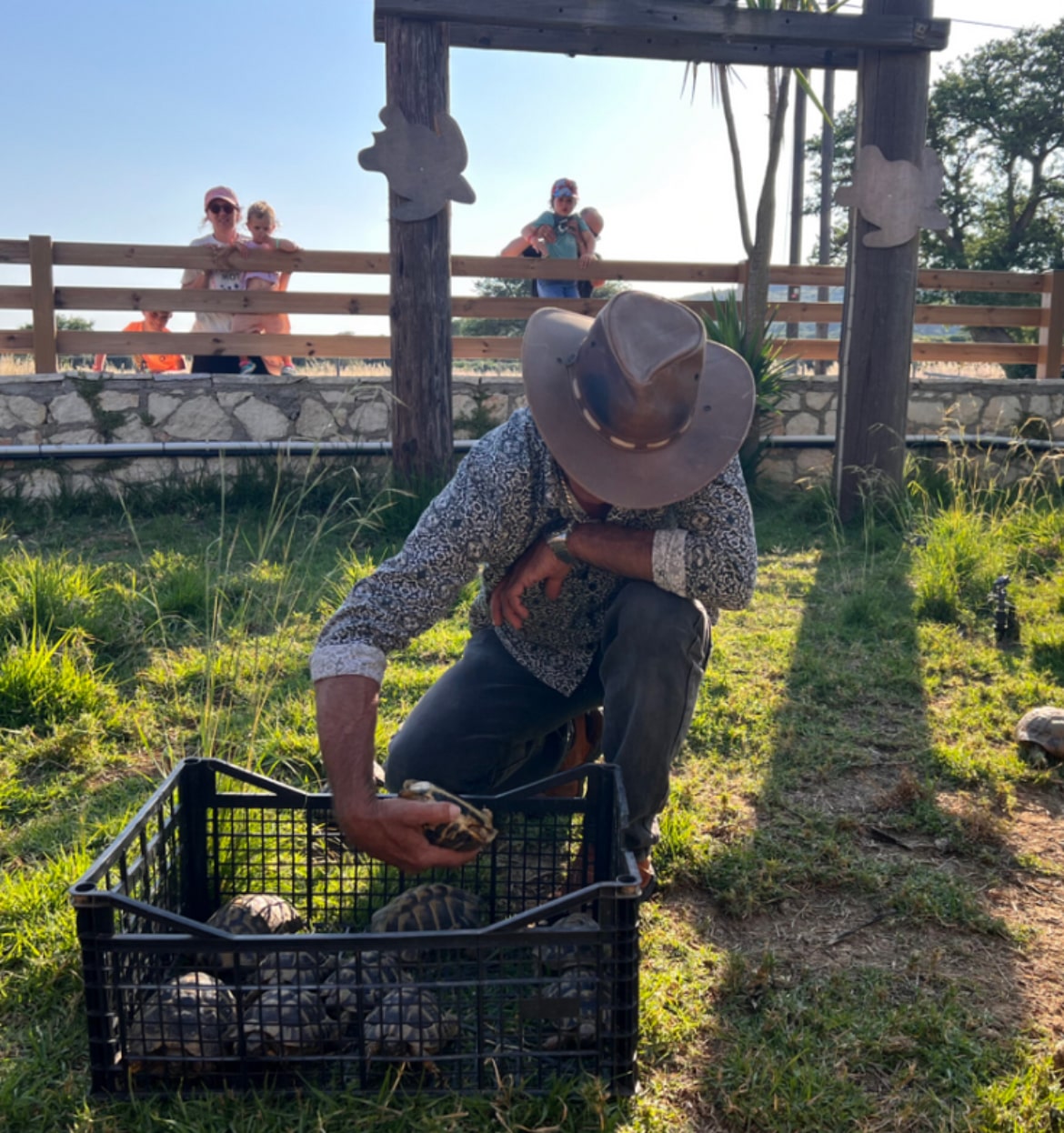Tortoises are reptiles that are adapted for life on land with their stocky legs and dome-shaped shells. At our center we’ve got Mediterranean-native Greek land tortoises (also known as Hermann’s tortoise, scientifically known as Testudo hermanni).
These tortoises are small to medium-sized, growing to 20 to 25 centimeters. Their distinctive appearance and unique characteristics make them fascinating reptiles. The most noticeable part of the Greek tortoise is its carapace, or shell, which ranges in color from pale yellow to dark brown, with unique dark markings on each scute. See if you can spot the color differences between ours!
The carapace is typically highly domed in juveniles but tends to flatten out in adults. The plastron, or underbelly, has hinges that allow the tortoise to retract its head and limbs for protection, something that turtles cannot do.
Greek tortoises are herbivorous, feeding on a variety of vegetation, including grasses, weeds, and succulents. They love all different types of fruits and vegetables, which we feed them every day at 14:00!
They are known for their ability to burrow, which allows them to escape extreme temperatures and find shelter from predators. You can also see this behavior in the tortoises at our centre. They like to burrow themselves in the grass and only peek out during feeding time or when they fancy a sunbathing session.
The Greek tortoise has a long lifespan, often living for several decades in the wild and even longer in captivity, with some reaching over 50 years old. Their breeding season depends on the weather but usually lasts from April to May. One female can lay a nest with two to six eggs which take 6 -10 weeks to hatch, depending on the temperature. Just like sea turtles, the temperature of the nest determines if the hatchlings will be male or female.
Watch a Greek tortoise laying her eggs here.
Tortoises
Released

